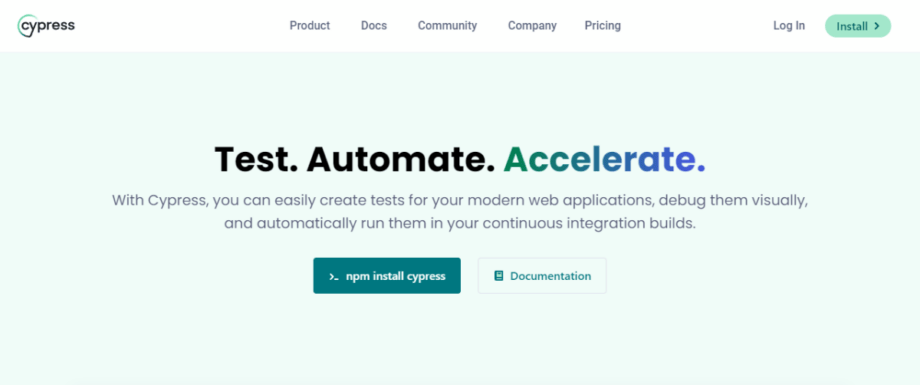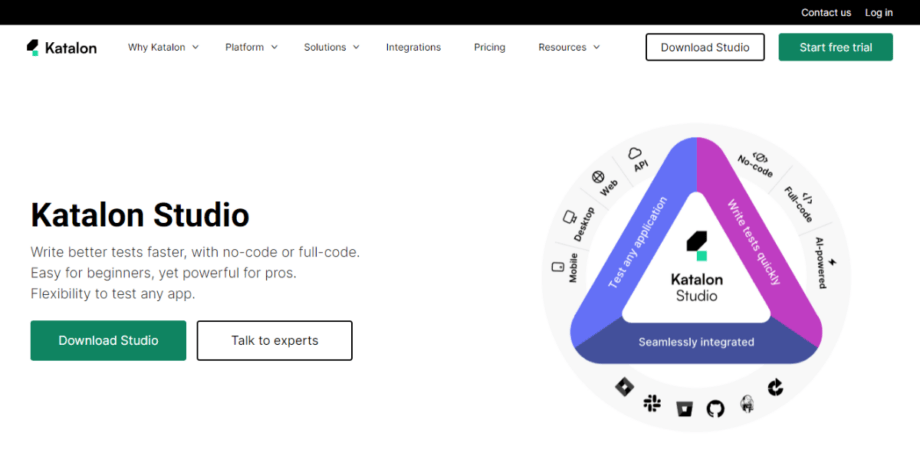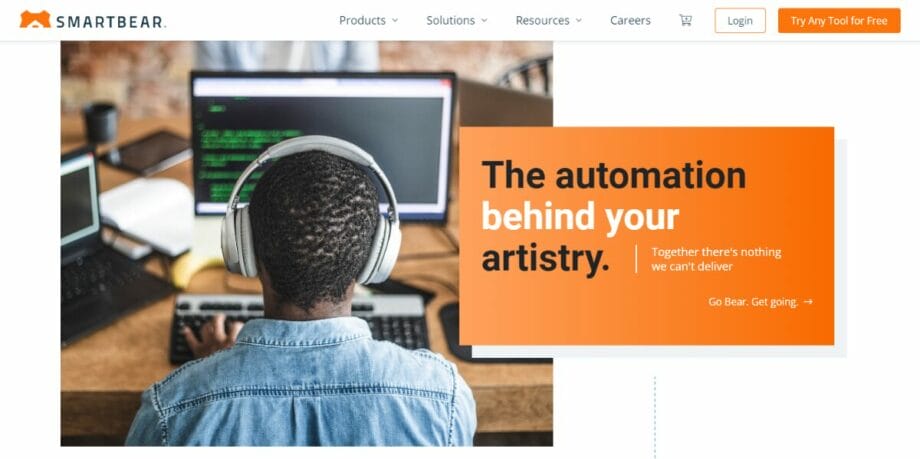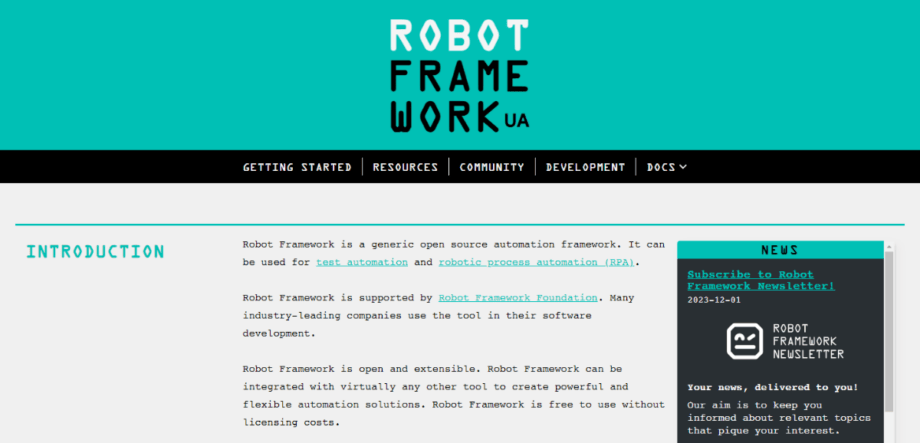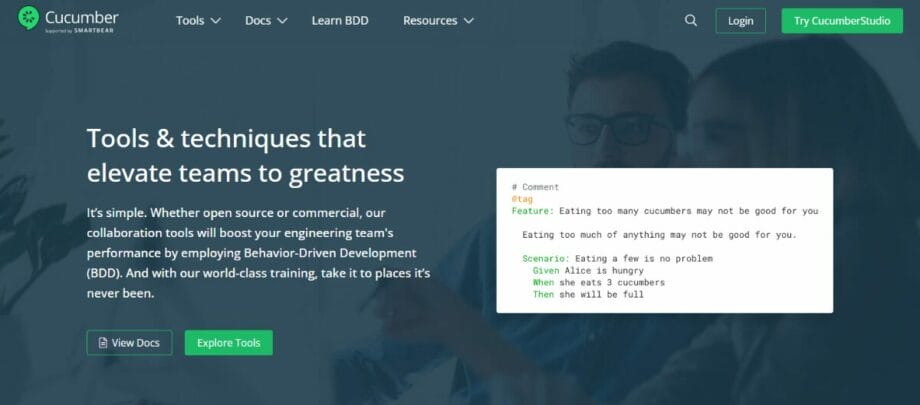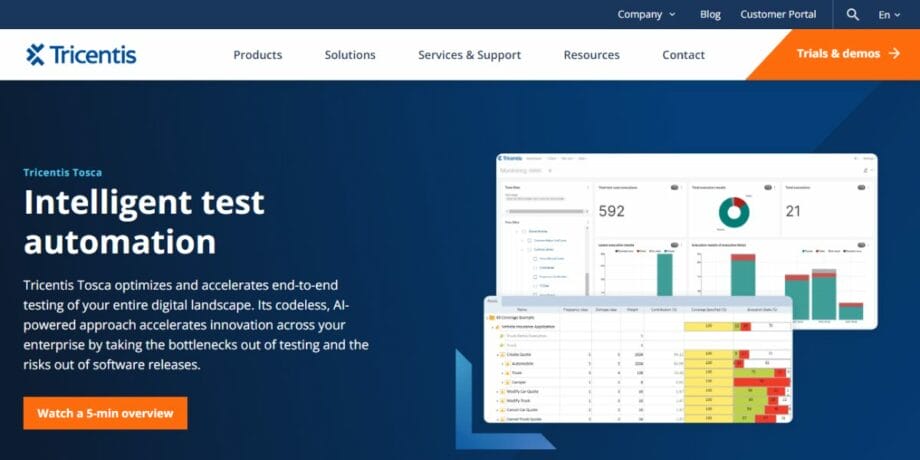Automation testing has become crucial for software teams wanting to ship high-quality apps fast. It lets QA people spend less time on repetitive, boring manual tests and focus on more exciting test cases.
By having robots handle those mundane tasks, teams can go through test cycles much quicker. That means faster releases with fewer bugs – and happier customers! It’s a win all around.
With demand for test automation on the rise, there are now many tools out there to help – free, open-source tools and paid commercial options. These cater to different testing needs so you can find a good fit for your specific situation.
Whether you need to test web apps, desktop programs, APIs, or something else, an automation tool can do the grunt work for you. Automated tests are way more reliable than manual ones, giving consistent results every time.
So, if you’re still doing a lot of manual testing, look into test automation tools! They can save your team a considerable amount of time and effort while also improving quality. Find one tailored to your tech stack and start developing some test scripts.
Picking the right automation tool is super important if you want to reap the rewards of test automation. The tool must work with your tech stack, testing needs, skills, and budget. It has to be the complete package!
With that in mind, let me walk you through 10 best automation testing tools that have been getting some buzz lately and are worth a look for 2025. I’ll review what makes each one stand out so you can weigh the options.
This isn’t an exhaustive list, and your needs may differ based on your unique situation. But it gives you a solid starting point for evaluating test automation tools and figuring out which resonates with your team!
1. Selenium
Regarding open-source test automation, Selenium is arguably the big kahuna – especially for web app testing.
This trusty framework has been around since way back in 2004!
Despite all these years, it’s still going strong thanks to ongoing development and support from its rockin’ open-source community. Those folks are constantly making Selenium even better.
The fact that it has stood the test of time since 2004 in the fast-paced software world speaks to how solid Selenium is. Lots of frameworks flame out quickly, but not Selenium!
Its flexibility and ability to adapt is really what makes it so popular. The fact that it’s open source makes Selenium very appealing to many teams and projects.
So, if you’re looking to get into test automation for web apps, Selenium is one to look at. It has all the features you’d need and then some!
Here are some of the critical features of Selenium:
- It supports multiple languages like Java, C#, Python, Ruby, JavaScript, etc., for writing test scripts.
- Allows testing against various browsers, including Chrome, Firefox, Safari, Edge, and IE.
- It supports operating systems such as Windows, Linux, and macOS.
- It integrates with testing frameworks like JUnit, TestNG, NUnit, etc.
- Easy to use Domain Specific Languages like Selenese allow writing tests without coding.
- Distributed test execution is possible through Selenium Grid, which enables running tests across environments.
- Active forums and contributors constantly improve Selenium with new capabilities and bug fixes.
With its flexibility, scalability, and thriving ecosystem, Selenium remains the de facto choice for open-source test automation in 2025.
2. Cypress
Cypress has quickly gained a lot of fans as a front-end testing framework since hitting the scene in 2017. In just a few short years, it’s already been downloaded over 36 million times – that’s wild!
That massive adoption makes Cypress one of the most popular open-source testing tools.
When you think about how many frameworks fade into obscurity, Cypress’s rapid rise to stardom in such a short time is seriously impressive.
The front-end web testing space was ripe for a new player like Cypress to shake things up. Its fast test runs and developer-friendly design hit the sweet spot.
So, if you find front-end web testing a drag with your current tools, give Cypress a spin! It’s got the goods to make testing slick and painless instead of a chore. With so many devs hopping on the Cypress train, it’s worth a close look to see if it’d also fit your needs.
Here are some of the notable features of Cypress:
- Asynchronous architecture for faster and more reliable test runs.
- Automatic waiting, retries, and error handling minimize test flakiness.
- Interactive interface with DOM element highlighting for rapid test development.
- Support for end-to-end UI flows across web pages for complete test coverage.
- It can mock API endpoints, stub network calls, and test edge cases.
- The test runner is bundled with Cypress while installation compared to separate ones needed for Selenium.
- Developer-friendly JavaScript API for test scripting.
- Support for BDD test frameworks like Mocha and Cucumber.
- Continuous runs in CI/CD pipelines are possible.
- Free and open source framework with optional Test Runner for enterprises.
Cypress is gaining popularity as a reliable and developer-friendly option for end-to-end UI testing of modern web applications.
3. Katalon Studio
Are you tired of test automation being a colossal pain that requires too much programming wizardry? Well, Katalon Studio aims to make it easy for us non-coder folks.
This automation platform lets you test anything – web, API, mobile, desktop, and IoT applications. And you don’t need to be an expert developer to make it happen!
Under the hood, Katalon builds on Selenium and Appium, which are like the bread and butter of automation. But then they layer on many intelligent features and a clean interface so even us automation newbies can succeed.
I especially dig how it simplifies creating and managing tests across different types of apps. Keeping all that organized can get messy quickly, but Katalon makes it almost (dare I say) fun!
Between the automation power and smoother learning curve, Katalon Studio hits a sweet spot for teams struggling with complex test automation. Less programming, more testing – we’ll take it!
Here are some salient features:
- Simplifies test creation with automatic test script generation and custom keywords.
- Reusable test artifacts across Web, API, and Mobile, enabling easy test maintenance.
- GUI and command line execution supported.
- AI-powered auto-healing, impact analysis, and insight generation.
- Hundreds of integrations with Jira, CI tools, Slack, qTest, etc.
- Large community around Katalon for sharing plugins, keywords, and solutions.
- Customizable dashboards and comprehensive reports for test analytics.
- Free version for small teams and paid enterprise offerings for large teams.
Katalon Studio streamlines automation testing and complements automation frameworks like Selenium and Appium with its simplicity and custom tooling.
4. TestComplete
TestComplete by SmartBear is a popular commercial automated testing tool, especially test automation in desktop apps and games. It supports multiple scripting languages, including JavaScript, Python, VBScript, etc.
Here are some of its notable features:
- Object identification technology for reliable test automation and minimizing maintenance.
- Script debugging capability.
- Visual data modeling for readable tests.
- CLI runner for CI/CD integration and Docker containers support.
- It integrates with source control such as Git, SVN, Mercurial, etc.
- Plugins for integration with Visual Studio, Azure DevOps, Jira, and Slack.
- Automatic test documentation generation.
- Built-in test reporting.
With robust object recognition algorithms and integrations with various ALM tools, TestComplete is a proven test automation tool for enterprise teams.
5. Ranorex
Ranorex is a GUI test automation framework optimized for testing complex, data-driven web and desktop applications. It allows writing test code in C# or VB.Net programming languages.
Some key features:
- Powerful object recognition mechanisms minimize test maintenance.
- Reusable test modules allow for building stable automation frameworks.
- Comprehensive configuration management for test data, environments, etc.
- Integrated test reporting to document test runs.
- RanoreXPath syntax for dynamic object identification.
- Supports cross-browser testing on Selenium Grid.
- Integrates with CI systems like Jenkins, Bamboo, and TeamCity.
Ranorex offers capabilities required for advanced test automation like reusable test libraries, configuration management, and CI integrations beyond the core object recognition functionality.
6. TestProject
TestProject is a free and open-source test automation platform for Web, Mobile, and API testing. Instead of directly using Selenium, tests are written using TestProject’s Java SDK called Agent.
Here are some key features:
- Free community repository of reusable test materials and examples.
- Smart test recorder to simplify test creation.
- AI-based self-healing for test maintenance.
- Distributed testing through integrated Selenium Grid.
- Integrations with testing tools like TestRail, ReportPortal, CI/CD systems, etc.
- Collaboration platform for sharing test artifacts.
- Option for TestProject enterprise offerings with advanced features.
The community-driven model and built-in AI capabilities make TestProject a compelling open-source test automation solution.
7. Robot Framework
Robot Framework is an open-source automation framework using tabular test case syntax and a keyword-driven testing approach. Tests can be written in Python or Java.
Some salient features:
- Tabular syntax for compact test case representation.
- Based on keyword-driven testing principles.
- Supports BDD syntax via external libraries.
- Easy to extend by Python and Java libraries.
- Platform and browser agnostic.
- Integrates well with CI/CD pipelines.
- Large ecosystem of reusable keywords and libraries.
- Model-based test case design.
- It integrates with many test equipment protocols like Selenium, Appium, HTTP, MQTT, etc.
Robot Framework offers simplicity yet good extensibility that adapts well across various test automation needs.
8. Cucumber
Cucumber is a popular open-source BDD framework that bridges communication gaps between business and technical teams. Tests written in simple Gherkin language are understandable by all stakeholders.
Key features:
- Plain English Gherkin syntax for writing tests.
- Reusable step definitions for common test logic across tests.
- Integrates with Selenium for UI test automation.
- Extensible via Ruby, Java, JavaScript, Python, etc.
- The modular architecture supports custom plugins.
- Integrates well with CI/CD and testing tools.
- Active open source community behind Cucumber.
Cucumber enables teams to collaborate effectively through BDD principles and living documentation.
9. Tricentis Tosca
Tricentis Tosca is a model-based test automation software primarily used by enterprises for mission-critical applications.
Some of its notable features:
- Centralized test design and maintenance for complex scenarios.
- Advanced test optimization engine using AI and predictive analytics.
- Integration with test management tools.
- Risk-based testing strategy based on production usage.
- Distributed execution for continuous testing with CI/CD.
- Scriptless end-to-end test automation.
- Virtualized test environments.
Tricentis Tosca accelerates automation testing with a model-based approach, analytics, and integration capabilities.
10. Postman
Postman has been a go-to tool for API testing for quite a while now. But recently, they’ve also expanded into handling UI test automation – super handy!
This allows us to automate end-to-end UI flows alongside API tests in the same Postman platform. It’s like a one-stop shop now for both kinds of test automation.
Having UI and API testing capabilities together in one place improves overall test coverage and helps connect the dots between the front end and back end. No more jumping through hoops! And the fact that Postman already has many fans from its API testing roots means a solid community and support system is in place.
This expanded scope is welcome news for teams that rely on Postman for API testing and need to level up on UI automation. Why juggle multiple tools if you can stay within Postman? It’s worth a close look!
Some salient UI testing features:
- Visually write UI test scripts using Postman’s web Builder.
- Automatic element identification for faster test creation.
- Cross-browser support for tests.
- Integration with Selenium Grid for distributed testing.
- A single test suite of API and UI tests improves correlation.
- Command line runner for CI/CD integration.
- Newman CLI can execute UI tests headlessly.
- Monitor test runs with Postman’s API monitoring capabilities.
Postman provides a unified end-to-end testing solution and its popular API testing features.
Conclusion

So, those are ten automation testing tools worth looking at this year based on the buzz they’re generating. There’s a nice mix of open-source and commercial options to evaluate.
Open-source heroes like Selenium and Cypress have active communities, ensuring they continue to evolve. Then, there are advanced commercial tools like Tricentis Tosca and TestComplete for heavy-duty enterprise testing needs.
For teams new to test automation, check out Katalon Studio, Robot Framework, or TestProject as more accessible stepping stones. And Postman now lets you handle API and UI testing in one platform.
Cucumber also enables BDD-style testing through its signature Gherkin syntax. But there are tons of other great tools out there, too!
Before picking any tool, look at your team’s specific skills, applications, testing needs, and infrastructure. Find the one that best aligns with your goals and environment.
Choosing the right automation tool for your unique situation gives you the most excellent chance of success.


